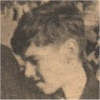 | Name: Fred
Overview: Fred`s family was poor and food was rationed in his early years: he remembers that a Mars bar was cut into slices to last 4 or 5 days! After diagnosis, he was told that `I had to control the diabetes rather than the diabetes control me` and has tried to follow that advice ever since. He lost his sight in 1978 and his second wife left him because she couldn`t cope. He began a successful business making garden furniture and now lives with his third wife, who is also blind.
Hits=2 |
|
| 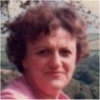 | Name: June Hill
Overview: June Hill had never eaten much sweet food and had always had plenty of exercise so her diagnosis brought little change and had no effect on her career as a teacher and then a nurse. She went on tablets in 1983, and was put on insulin in 1995, when she had a serious illness unconnected with diabetes. She took no interest in her own diabetes for many years until her diabetic mother became housebound. Then she began to inform herself about long-term implications. She is very fit and is enjoying her retirement.
There is also an interview with June Hill`s husband, Tony Hill
Hits=2 |
|
|  | Name: John Browning
Overview: John Browning`s father was an army officer and John always assumed that he would make his own career in the forces. He was diagnosed with diabetes at the age of 28, not long after getting married, and was invalided out of the army. He became a Conservative party agent and then a teacher. He still weighs his food and attributes his good health to his strict regime. He thinks one of the main improvements in his care has been to see the same specialist at each visit, instead of a different person every time.
Hits=2 |
|
|  | Name: Kushira Hackett
Overview: Kushira Hackett`s mother was white and her father black – from Guyana. Her parents split up when she was 5 and her mother later married a Jamaican. After diagnosis, the hospital staff explained to her mother about portions and gave her scales for weighing food, but gave no explanations to Kushira. Her mother also gave no explanations, and she thinks this led to her rebellion against diabetes, and to her leaving home aged 16. She had a period of homelessness, but later gained a law degree and now lives happily in Birmingham with her partner and two children.
Hits=1 |
|
|
 | Name: Simon Lawson
Overview: Simon Lawson`s father was 65 when he was born and his mother 44, and both died while he was in his teens. His unhappiness affected his public school education and he failed to get a place at Cambridge. Instead he worked at Sotheby`s in London and it was only after he married in 1971 that he obtained a degree and a doctorate – leading to his present work as an Oxford University librarian. He has warm memories of being treated by two eminent consultants – RD Lawrence and John Nabarro – and has always enjoyed knowing as much as possible about diabetes.
Hits=1 |
|
|  | Name: Shirley Jones
Overview: Shirley Jones` parents had little money to spend on food and she remembers eating bread and jam `many, many times`. She married at 19, divorced, married again at 21, and then her second husband left her to bring up two small children alone before she was diagnosed with diabetes, aged 32. She was recruited into the UK Prospective trial for Type 2 diabetes, but rapidly became insulin-dependent. Until recently, she ran a pub with her current partner. She is now on kidney dialysis.
Hits=1 |
|
|
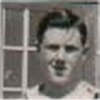 | Name: Ron Craythorne
Overview: Ron Craythorne worked all his life in the family business of carpentry and joinery but, when he retired, there was no-one to take over, so now he and his wife give shows for charity, showing people round the old workshop and selling the products of his woodturning. (He carved and painted the wooden fruit and bowls shown in his photo.) He has played team sports all his life and diabetes has caused him few problems. However, he knows of the problems it can cause, from members of the diabetic group he founded several years ago.
Hits=1 |
|
|  | Name: Kevin Jones
Overview: Kevin Jones` father worked in a Welsh mine, then joined the Royal Navy and worked his way up from sick berth attendant to Lieutenant Commander. Kevin went to various grammar schools in Navy ports and left at 18 to train as an accountant. He worked for several large companies, unhindered by his diabetes, but has had more problems in recent years. In 2002 his leg was amputated, but he had great help from the Limb Centre and now walks and drives with an artificial limb. He loves jazz, and is pictured with a statuette of a jazz musician.
Hits=1 |
|
|
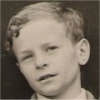 | Name: Philip
Overview: Philip was diagnosed aged 9 and considers that it`s better to get diabetes young, when the body is more adaptable. He attended a grammar school, and regrets that he often used diabetes as an excuse to miss school. He left at 16, but acquired more qualifications later and became a successful accountant. His diabetes was well controlled and caused little trouble for most of his life, until he began to get early morning hypos a few years ago. (He finds the term `hypo` unhelpful, since it`s used to refer to anything from a mild sensation to complete unconsciousness.)
Hits=1 |
|
| 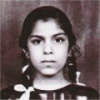 | Name: Bena
Overview: Bena was born in the Kigezi District of Uganda, the daughter of a wealthy businessman. She was diagnosed when nearly 12 and then shunned by children who thought diabetes was contagious. She lived on chapattis and spinach and a bitter vegetable juice thought to cure diabetes. When Idi Amin expelled Ugandan Asians in 1972, her family came to England, and she was delighted to be allowed to eat a wider range of food. She eventually married an Englishman and had two daughters. She works as an office administrator, in a social services department that supports disabled children.
There are also interviews with Bena`s daughter, Emma and her husband, Terry.
Hits=1 |
|
|
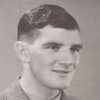 | Name: Michael Williams
Overview: Michael Williams worked in general medicine at Aberdeen Royal Infirmary until 1968, when he was given three months leave to study diabetes with John Butterfield at Guy`s Hospital in London and John Malins at Birmingham General Hospital. He returned to Aberdeen to work with John Stowers as a ‘Consultant in General Medicine with Special Interest in Metabolic Diseases` until 1983 and then consultant in charge of the Infirmary`s diabetic clinic until he retired in 1994 and was succeeded by Ken McHardy. He has published several papers about his fellow Aberdonian, the co-discoverer of insulin, J.J.R. Mcleod.
Hits=1 |
|
|  | Name: Irene Bainbridge
Overview: Irene Bainbridge trained in medicine at Oxford University from 1953 to 1960 and became a full-time mother from 1961 to 1974. When she returned to work, she found much had changed, especially in diabetes care. After further training, she became a GP from 1978 to 2000 in a rural dispensing practice in Essex, twenty miles from the nearest hospital. The practice appointed a Diabetes Specialist Nurse in the late 1980s. At the time of interview, she was still doing sessional work in general practice and was editorial adviser to the journal, ‘Dispensing Doctor`.
Hits=1 |
|
|
| Search returned 15 matches |